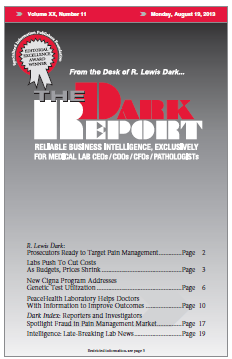CEO SUMMARY: Described by its CEO as “an information company that happens to do laboratory testing,” PeaceHealth Laboratories of Springfield, Oregon, is moving swiftly to develop and deliver value-added services to its client physicians. The lab’s goal is to help referring doctors achieve improved patient outcomes. HEALTHCARE IS CHANGING RAPIDLY, and perceptive pathologists and laboratory […]
To access this post, you must purchase The Dark Report.


